Peroxisomes are signaling platforms for antiviral innate immunity
- PMID: 20451243
- PMCID: PMC3670185
- DOI: 10.1016/j.cell.2010.04.018
Peroxisomes are signaling platforms for antiviral innate immunity
Abstract
Peroxisomes have long been established to play a central role in regulating various metabolic activities in mammalian cells. These organelles act in concert with mitochondria to control the metabolism of lipids and reactive oxygen species. However, while mitochondria have emerged as an important site of antiviral signal transduction, a role for peroxisomes in immune defense is unknown. Here, we report that the RIG-I-like receptor (RLR) adaptor protein MAVS is located on peroxisomes and mitochondria. We find that peroxisomal and mitochondrial MAVS act sequentially to create an antiviral cellular state. Upon viral infection, peroxisomal MAVS induces the rapid interferon-independent expression of defense factors that provide short-term protection, whereas mitochondrial MAVS activates an interferon-dependent signaling pathway with delayed kinetics, which amplifies and stabilizes the antiviral response. The interferon regulatory factor IRF1 plays a crucial role in regulating MAVS-dependent signaling from peroxisomes. These results establish that peroxisomes are an important site of antiviral signal transduction.
Copyright (c) 2010 Elsevier Inc. All rights reserved.
Figures
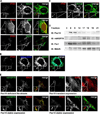
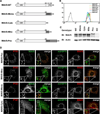
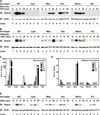

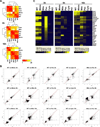
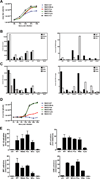
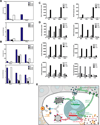
Comment in
-
Viral defense: it takes two MAVS to Tango.Cell. 2010 May 14;141(4):570-2. doi: 10.1016/j.cell.2010.04.043. Cell. 2010. PMID: 20478250
-
Antiviral immunity: Speed and endurance required.Nat Rev Immunol. 2010 Jul;10(7):465. doi: 10.1038/nri2809. Nat Rev Immunol. 2010. PMID: 20586123 No abstract available.
Similar articles
-
Hepatitis C virus NS3-4A inhibits the peroxisomal MAVS-dependent antiviral signalling response.J Cell Mol Med. 2016 Apr;20(4):750-7. doi: 10.1111/jcmm.12801. Epub 2016 Feb 10. J Cell Mol Med. 2016. PMID: 26865163 Free PMC article.
-
Activation of Type I and III Interferon Response by Mitochondrial and Peroxisomal MAVS and Inhibition by Hepatitis C Virus.PLoS Pathog. 2015 Nov 20;11(11):e1005264. doi: 10.1371/journal.ppat.1005264. eCollection 2015 Nov. PLoS Pathog. 2015. PMID: 26588843 Free PMC article.
-
Herpes simplex virus 1 infection dampens the immediate early antiviral innate immunity signaling from peroxisomes by tegument protein VP16.Virol J. 2017 Feb 21;14(1):35. doi: 10.1186/s12985-017-0709-5. Virol J. 2017. PMID: 28222744 Free PMC article.
-
Orchestrating the interferon antiviral response through the mitochondrial antiviral signaling (MAVS) adapter.Curr Opin Immunol. 2011 Oct;23(5):564-72. doi: 10.1016/j.coi.2011.08.001. Epub 2011 Aug 22. Curr Opin Immunol. 2011. PMID: 21865020 Review.
-
Peroxisomes and Innate Immunity: Antiviral Response and Beyond.Int J Mol Sci. 2019 Aug 3;20(15):3795. doi: 10.3390/ijms20153795. Int J Mol Sci. 2019. PMID: 31382586 Free PMC article. Review.
Cited by
-
Viral CNS infections: role of glial pattern recognition receptors in neuroinflammation.Front Microbiol. 2012 Jun 20;3:201. doi: 10.3389/fmicb.2012.00201. eCollection 2012. Front Microbiol. 2012. PMID: 22723794 Free PMC article.
-
5,6-Dimethylxanthenone-4-acetic acid (DMXAA) activates stimulator of interferon gene (STING)-dependent innate immune pathways and is regulated by mitochondrial membrane potential.J Biol Chem. 2012 Nov 16;287(47):39776-88. doi: 10.1074/jbc.M112.382986. Epub 2012 Oct 1. J Biol Chem. 2012. PMID: 23027866 Free PMC article.
-
Redox-regulated cargo binding and release by the peroxisomal targeting signal receptor, Pex5.J Biol Chem. 2013 Sep 20;288(38):27220-27231. doi: 10.1074/jbc.M113.492694. Epub 2013 Jul 31. J Biol Chem. 2013. PMID: 23902771 Free PMC article.
-
Innate Immune Sensing of Influenza A Virus.Viruses. 2020 Jul 14;12(7):755. doi: 10.3390/v12070755. Viruses. 2020. PMID: 32674269 Free PMC article. Review.
-
Defining the subcellular sites of innate immune signal transduction.Trends Immunol. 2012 Sep;33(9):442-8. doi: 10.1016/j.it.2012.06.005. Epub 2012 Jul 18. Trends Immunol. 2012. PMID: 22817912 Free PMC article. Review.
References
-
- Akira S, Uematsu S, Takeuchi O. Pathogen recognition and innate immunity. Cell. 2006;124:783–801. - PubMed
-
- Balachandran S, Venkataraman T, Fisher PB, Barber GN. Fas-associated death domain-containing protein-mediated antiviral innate immune signaling involves the regulation of Irf7. J Immunol. 2007;178:2429–2439. - PubMed
Publication types
MeSH terms
Substances
Associated data
- Actions
Grants and funding
LinkOut - more resources
Full Text Sources
Other Literature Sources
Molecular Biology Databases
Research Materials
Miscellaneous

